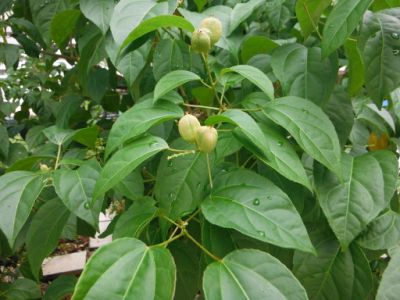[1] Potter's New Cyclopaedia of Botanical Drugs and Preparations R.C. Wren
Revised by Elizabeth M. Williamson and Fred J Evans. First published in Great
Britain in 1988 and reprinted in 1989 and 1994 by the C. W. Daniel Company Limited.
1 Church Path, Saffron Walden Essex. Published 1988 Printed and bound by Biddles,
Guildford ISBN 085207 1973.
Images
1.
singaporeplantgrower.blogspot.com.au
2.
rightfutureinternational.co.in
Diterpene esters of the tigliane type, the most important; tetradecanoyl phorbol
acetate (TPA).[1,2]
The oil is tumour promoting, and also causes erythema, vesication and hyperplasia
of the skin, platelet aggregation, interference with prostaglandin metabolism
and many other actions. It has been shown to activate the enzyme protein kinase
C- which is associated with carcinogenesis and inflammation. 1 ml of oil is usually
fatal.[1]
References
[1] Hecker, E. (1968) Cancer Res. 28, 2338
[2] Evans, F. J. and Taylor, S. E. (1983) Prog. Chem. Org. Natu. Prod. 44,
1
[3] Berenblum, I. and Shubik, P. (1947) Brit. J. Cancer 1, 379
[4] Nishizuka, Y. (1984) Nature 308, 693
 Croton
tiglium, Tiglium officinale
Purging croton seeds
Croton
tiglium, Tiglium officinale
Purging croton seeds
